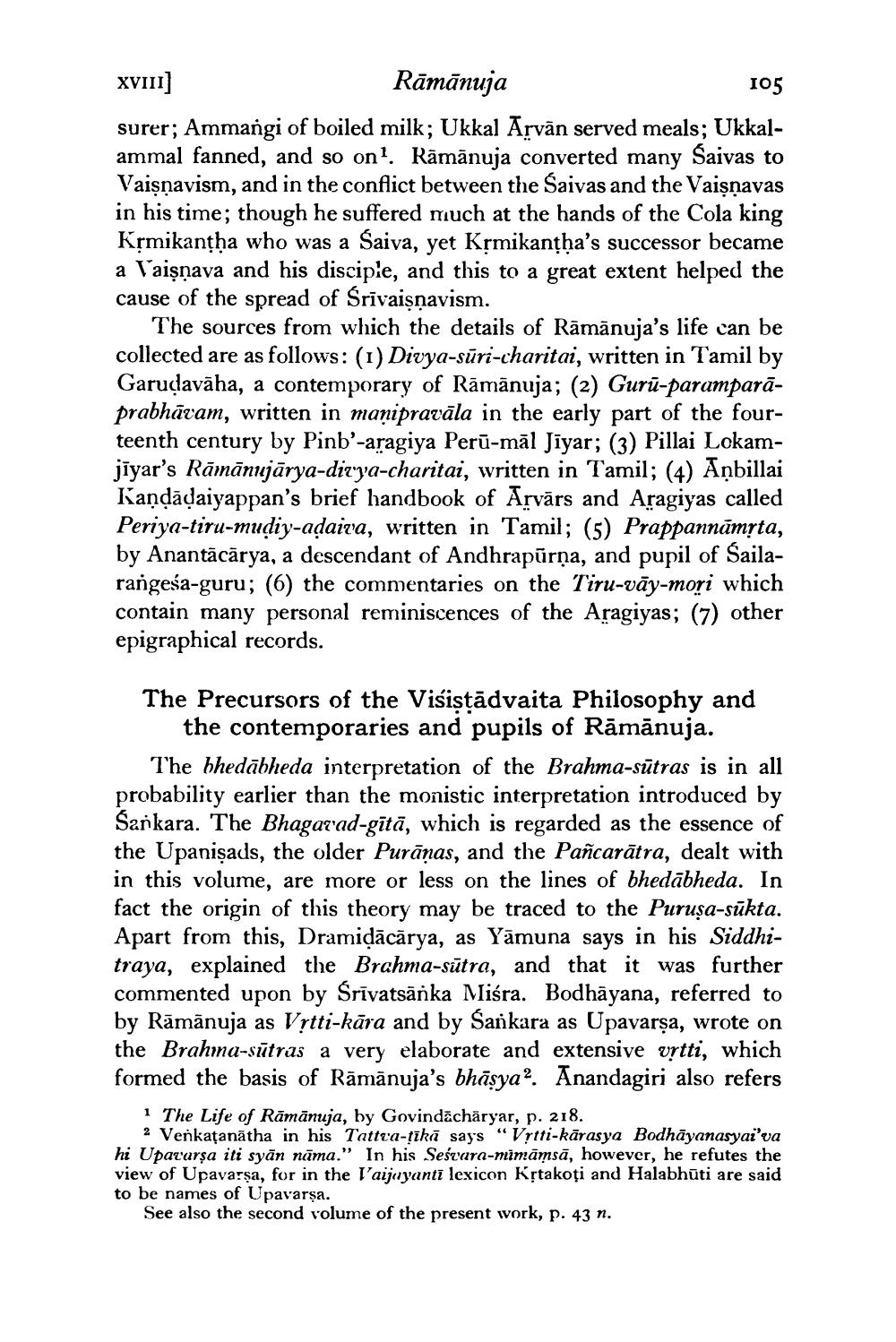________________
105
XVIII
Rāmānuja surer; Ammangi of boiled milk; Ukkal Arvān served meals; Ukkalammal fanned, and so on?. Rāmānuja converted many Saivas to Vaisnavism, and in the conflict between the Saivas and the Vaişnavas in his time; though he suffered much at the hands of the Cola king Krmikantha who was a Saiva, yet Krmikantha's successor became a Vaişnava and his disciple, and this to a great extent helped the cause of the spread of Śrīvaisnavism.
The sources from which the details of Rāmānuja's life can be collected are as follows: (1) Divya-sūri-charitai, written in Tamil by Garudavāha, a contemporary of Rāmānuja; (2) Gurū-paramparāprabhāvam, written in manipravāla in the early part of the fourteenth century by Pinb'-aragiya Perū-māl Jiyar; (3) Pillai Lokamjīyar's Rāmānujārya-dirya-charitai, written in Tamil; (4) Anbillai Kaņdādaiyappan's brief handbook of Arvārs and Aragiyas called Periya-tiru-mudiy-adaiva, written in Tamil; (5) Prappannāmrta, by Anantācārya, a descendant of Andhrapūrņa, and pupil of Sailarangesa-guru; (6) the commentaries on the Tiru-vāy-mori which contain many personal reminiscences of the Aragiyas; (7) other epigraphical records.
The Precursors of the Visiştādvaita Philosophy and
the contemporaries and pupils of Rāmānuja. The bhedābheda interpretation of the Brahma-sūtras is in all probability earlier than the monistic interpretation introduced by Sarkara. The Bhagavad-gītā, which is regarded as the essence of the Upanisads, the older Purānas, and the Pañcarātra, dealt with in this volume, are more or less on the lines of bhedābheda. In fact the origin of this theory may be traced to the Puruşa-sūkta. Apart from this, Dramidācārya, as Yamuna says in his Siddhitraya, explained the Brahma-sūtra, and that it was further commented upon by Śrīvatsānka Miśra. Bodhāyana, referred to by Rāmānuja as Vịtti-kāra and by Sankara as Upavarşa, wrote on the Brahma-sutras a very elaborate and extensive vrtti, which formed the basis of Rāmānuja's bhāsya? Anandagiri also refers
1 The Life of Rāmānuja, by Govindācharyar, p. 218.
2 Venkațanātha in his Tattra-tīkā says “Virtti-kārasya Bodhāyanasyai'va hi Upacarsa iti syān nüma." In his Seśtara-mināmsā, however, he refutes the view of Upavarşa, for in the l'aijayanti lexicon Kệtakoți and Halabhūti are said to be names of Upavarşa.
See also the second volume of the present work, p. 43 n.




